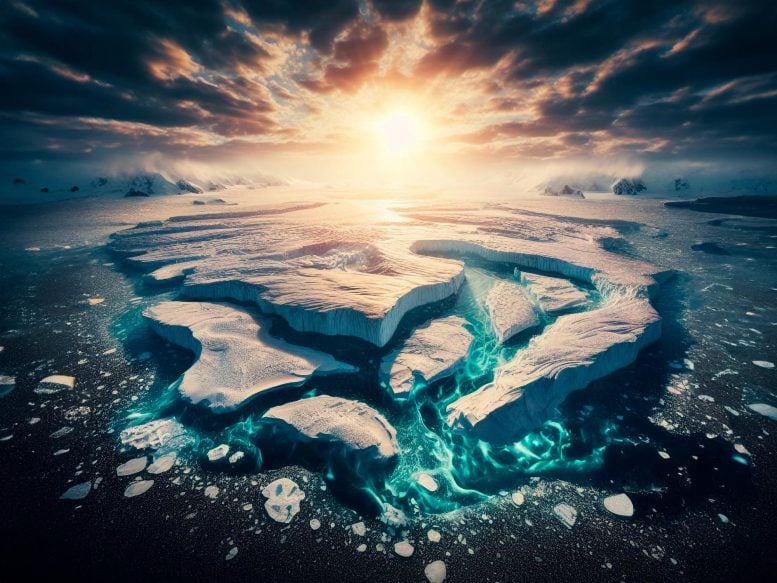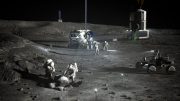
Researchers, including those from the University at Buffalo, have discovered that Greenland’s peripheral glaciers are retreating at an alarming rate, with the 21st-century retreat rate doubling compared to the 20th century. This finding, derived from satellite and historical aerial data, highlights the glaciers’ rapid response to climate change and the consequent risk of rising sea levels.
Greenland’s peripheral glaciers are retreating rapidly, with recent studies showing a significant acceleration in the 21st century. This highlights the urgent need to address climate change to mitigate its impact on sea levels.
Greenland’s thousands of peripheral glaciers have entered a new and widespread state of rapid retreat, a study involving University at Buffalo (UB) researchers has found.
Combining satellite images with historical aerial photographs of Greenland’s coastline, a research team led by Northwestern University and the University of Copenhagen determined that the rate of glacial retreat during the 21st century is twice as fast as retreat during the 20th century.
“The results add to growing documentation that glaciers in the Arctic are responding quickly to rising temperature due to human-caused climate change. This is concerning because their meltwater contributes to global sea level rise,” says Jason Briner, professor of geology, College of Arts and Sciences, and co-author on the study, which was published recently in the journal Nature Climate Change.
Historical Aerial Photographs: A Key to Understanding Glacier History
Prior to the launch of Earth-observing satellites in the 1970s, researchers did not have a full understanding of how temperature changes affected Greenland’s glaciers. Widespread and detailed observational records simply did not exist — or so researchers thought.
A breakthrough came about 15 years ago when long-forgotten aerial photographs of Greenland’s coastline were rediscovered in a castle outside Copenhagen.
“Starting in the 1930s, Danish pilots clad in polar bear-fur suits set out on aerial mapping campaigns of Greenland and ended up collecting over 200,000 photos of the island’s coastline,” says the study’s first author, Laura Larocca, a National Oceanic and Atmospheric Administration Climate & Global Change Postdoctoral Fellow who was a PhD candidate at Northwestern University when the research began in 2018. “They also unintentionally captured the state of Greenland’s peripheral glaciers.”
The images enabled Anders Bjørk, the study’s senior author and assistant professor at the University of Copenhagen, to begin constructing the glaciers’ history.
In previous studies, Bjørk and his collaborators digitized and analyzed photos to study 361 glaciers in the southeast, northwest, and northeast regions of Greenland. In the new study, the team led by Northwestern added records for 821 more glaciers in the south, north, and west regions, and extended Bjørk’s records to present day.
A Comprehensive Glacial History
As a part of this effort, the team digitized thousands of paper-copy aerial photographs taken from open-cockpit planes and collected imagery from multiple satellites. The researchers also removed terrain distortion and used geo-referencing techniques to place the photos at the correct locations on Earth.
The team extended records further back in time by leveraging clues hidden within the landscape. When glaciers grow larger and then retreat, they leave behind a terminal moraine — sediment transported and deposited by a glacier, often in the form of a long ridge. Locating these moraines enabled the researchers to map older glacier extents before pilots took their first flyover photos in the early 1930s.
Altogether, this one-of-a-kind data documents changes in the lengths of more than 1,000 of the country’s glaciers from 1890 to 2022.
“It’s quite extraordinary that we can now provide long-term records for hundreds of glaciers, finally giving us an opportunity to document Greenland-wide glacier response to climate change over more than a century,” says senior author Yarrow Axford, William Deering Professor of Geological Sciences in Northwestern’s Weinberg College of Arts and Sciences.
Findings: Significant Glacial Length Loss
Using the late 20th-century imagery as a baseline, the team calculated the percentage of length that glaciers have lost over the past 20 years. They found that, on average, glaciers in south Greenland lost 18% of their lengths, while glaciers in other regions lost between 5-10% of their lengths over the past 20 years. The only major possible exception are glaciers in northeast Greenland, where recent increases in snowfall might be slowing retreat.
Peripheral glaciers represent only 4% of Greenland’s total ice-covered area but contribute 14% of the island’s current ice loss.
“These glaciers, given their comparably smaller size, are the real canaries in the coal mine — they respond very quickly to Arctic warming,” Briner says. “Most projections of future sea level rise demonstrate that humanity still controls the knob. Fast action can stabilize temperature and sea level change after some in-the-pipeline change plays out.”
For more on this research:
- Greenland Glaciers Melting 5x Faster Than 20 Years Ago
- Greenland’s Glacier Retreat Doubled in 20 Years
Reference: “Greenland-wide accelerated retreat of peripheral glaciers in the twenty-first century” by L. J. Larocca, M. Twining–Ward, Y. Axford, A. D. Schweinsberg, S. H. Larsen, A. Westergaard–Nielsen, G. Luetzenburg, J. P. Briner, K. K. Kjeldsen and A. A. Bjørk, 9 November 2023, Nature Climate Change.
DOI: 10.1038/s41558-023-01855-6
Avriel Schweinsberg, who received her PhD from UB in 2018, is also a co-author on the study.
The study was supported by the National Science Foundation’s (NSF) Geography and Spatial Sciences Program, NSF Polar Programs, the University Corporation for Atmospheric Research’s Cooperative Programs for the Advancement of Earth System Science, and the Villum Foundation.









“Greenland’s PERIPHERAL glaciers are retreating rapidly, with recent studies showing a significant acceleration in the 21st century.”
The important word here is “peripheral.”
“The results add to growing documentation that glaciers in the Arctic are responding quickly to rising temperature due to human-caused climate change.”
The first part of the statement can be, and has been, verified. However, the second part, attributing the temperature rise solely to humans is debatable. Most commonly, supporters of the assertion point out the correlation between rising temperatures and rising CO2 concentrations. However, if they are aware that time-series commonly exhibit spurious correlation, they don’t mention it.
Young budding scientists are taught that the path to understanding how a dynamic system works is to perform controlled experiments where all the known variables except one are held constant, and measure how the dependent variable changes as an independent variable is changed in steps. This is the basis for claiming that CO2 controls Earth’s temperature. A century ago, early scientists observed that CO2 can absorb infrared radiation and re-radiate it.
Now the problem is, we can’t perform controlled experiments on the dynamic feedback system of the Earth. That is, we can’t make clouds increase or decrease at will in a laboratory. We are constrained to observing what happens and try to understand how everything interacts.
There is no question that CO2 CAN absorb infrared. However, we have a much poorer understanding of how the rest of the system reacts to that. We know that there is a poor correlation between Earth temperatures over geologic time. We know that ice cores from Law Dome (Antarctica) suggest that temperature changes over the last 800,000 years precede changes in CO2. We know that during recent El Nino events, CO2 increases during the warm phase, and then drops back during the cooler La Nina phase instead of staying at the elevated level. During the COVID-induced industrial shutdowns of 2020, anthropogenic CO2 declined, but the expected impact of a reduced rate of warming cannot be seen in the seasonal changes during the Winter ramp-up. I have demonstrated no statistically significant correlation between the 2020 CO2 emissions and the global atmospheric concentrations. In short, there are many reasons to doubt the role of anthropogenic CO2 emissions in warming Earth, but mainstream outlets rarely acknowledge them.